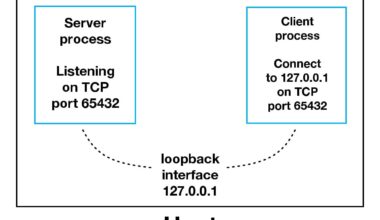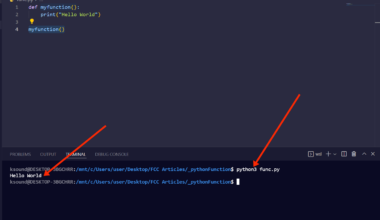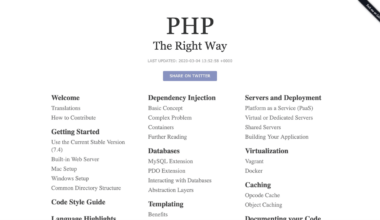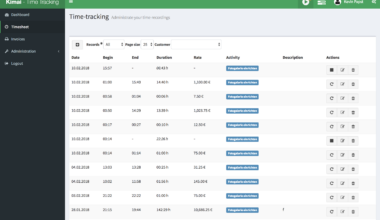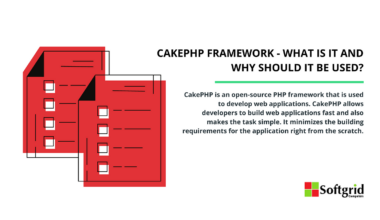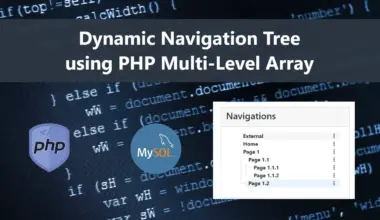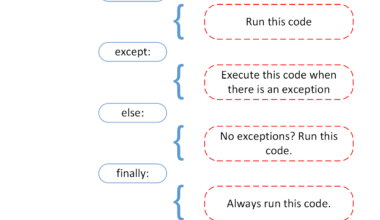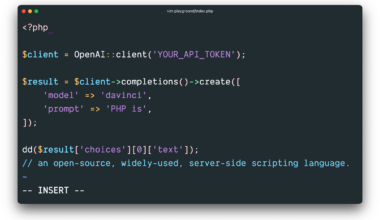Introduction to High-Speed Web Development with PHP and Codeigniter
As the demand for high-performance web applications increases, developers need a framework that can handle complex tasks with ease. PHP and Codeigniter are two technologies that can help developers build high-speed web applications.
PHP is a popular open-source server-side scripting language that can be used to develop dynamic web applications. It has a massive developer community, which means that finding help and support is easy. Codeigniter, on the other hand, is a powerful PHP framework that is well-known for its easy-to-use features. It provides a robust set of libraries and tools that make web development faster and more accessible.
In this article, we will explore the world of high-speed web development with PHP and Codeigniter. We will discuss the benefits of using these technologies, the Codeigniter framework architecture, and the MVC pattern. We will also take a closer look at how to leverage PHP and Codeigniter libraries for faster development and advanced techniques for optimizing PHP and Codeigniter performance.
Whether you are a beginner or an experienced developer, this article will provide you with valuable insights into how to develop high-speed web applications with PHP and Codeigniter. So, let’s dive in and explore the world of PHP and Codeigniter!
Benefits of Using PHP and Codeigniter for Web Development
PHP and Codeigniter offer many benefits for web development, making them popular choices for developers.
1.
Easy to Learn:
PHP is a beginner-friendly language that is easy to learn and use. Codeigniter, on the other hand, provides a simple and elegant framework that is easy to use, even for developers new to PHP.
2.
Open-Source:
Both PHP and Codeigniter are open-source technologies, which means that developers can access and use them for free. This makes them an excellent choice for developers who are working on a tight budget.
3.
Massive Developer Community:
PHP has a vast developer community that provides support, documentation, and tutorials. Codeigniter also has a large community of developers who contribute to the framework’s development and provide support to others.
4.
Speed and Performance:
PHP is a high-performance language that is optimized for web development. Codeigniter, with its lightweight architecture, provides excellent speed and performance for web applications.
5.
Modular Architecture:
Codeigniter is built with a modular architecture, which means that developers can choose to use only the components that they need. This makes the framework lightweight and faster.
6.
MVC Pattern:
Codeigniter follows the Model-View-Controller (MVC) pattern, which provides a clear separation between the application’s logic, presentation, and data. This makes the code more maintainable, testable, and easier to understand.
7.
Rich Library:
Codeigniter provides a rich set of libraries and tools that make web development faster and more accessible. These libraries include database access, form validation, file uploading, and more.
In conclusion, PHP and Codeigniter provide many benefits for web development, making them popular choices for developers. They are easy to learn, open-source, have a massive developer community, provide excellent speed and performance, have a modular architecture, follow the MVC pattern, and offer a rich set of libraries and tools to make web development faster and more accessible.
Codeigniter Framework Architecture and MVC Pattern
Codeigniter is a powerful PHP framework that follows the Model-View-Controller (MVC) pattern. The framework’s architecture is designed to provide developers with a simple and elegant way to build high-performance web applications.
The MVC pattern is a popular design pattern used in web development that separates an application’s logic, presentation, and data. In Codeigniter, the Model represents data and database interaction, the View represents the presentation layer, and the Controller handles the application’s logic.
Let’s take a closer look at each component of the MVC pattern in Codeigniter:
Model:
The Model is responsible for handling data and database interaction. It contains methods that allow developers to retrieve, insert, update, and delete data from the database. Codeigniter provides a set of built-in libraries that make database interaction easier, such as the Query Builder and Active Record.
View:
The View represents the presentation layer of the application. It contains HTML, CSS, and JavaScript code that defines how data is displayed to the user. Codeigniter provides a set of built-in libraries that allow developers to create reusable HTML templates, such as the Template Parser and Parser Class.
Controller:
The Controller handles the application’s logic by receiving requests from the user and passing them to the Model and View. It contains methods that perform tasks such as data validation, authentication, and authorization. Codeigniter provides a set of built-in libraries that make handling user input and output easier, such as the Form Validation and Input Class.
In Codeigniter, the MVC pattern provides a clear separation of concerns, making the code more maintainable, testable, and easier to understand. Developers can create reusable components that can be easily integrated into other projects, making development faster and more efficient.
Codeigniter’s lightweight architecture allows developers to choose only the components they need, making the framework faster and more efficient. The framework also provides a set of built-in libraries and tools that make web development faster and more accessible.
In conclusion, Codeigniter’s architecture and MVC pattern provide developers with a simple and elegant way to build high-performance web applications. The MVC pattern separates an application’s logic, presentation, and data, making the code more maintainable, testable, and easier to understand. Codeigniter’s lightweight architecture and built-in libraries make web development faster and more accessible.
Leveraging PHP and Codeigniter Libraries for Faster Development
One of the significant advantages of using PHP and Codeigniter for web development is the extensive libraries and tools that they offer. These libraries can help developers build web applications faster and more efficiently. Let’s take a closer look at some of the libraries available in Codeigniter that can help leverage PHP and Codeigniter libraries for faster development:
Form Validation Library:
Form validation is a critical part of web development, and Codeigniter provides a robust form validation library that makes it easy to validate user input. The library provides a set of rules that can be applied to form fields to ensure that the data is valid.
File Uploading Class:
The File Uploading Class in Codeigniter makes it easy to upload files to a server. It provides a set of methods that allow developers to handle file uploads, including validation, resizing, and renaming.
Database Access Library:
Codeigniter’s Database Access Library makes it easy to interact with databases. The library provides a set of methods that allow developers to retrieve, insert, update, and delete data from a database.
Template Parser Library:
The Template Parser Library in Codeigniter makes it easy to create reusable HTML templates. The library provides a set of methods that allow developers to create templates that can be used throughout an application.
Email Library:
The Email Library in Codeigniter makes it easy to send emails from an application. The library provides a set of methods that allow developers to send emails with attachments, HTML content, and more.
Encryption Library:
The Encryption Library in Codeigniter provides a set of methods that allow developers to encrypt and decrypt data. This library is essential for securing sensitive data, such as passwords, credit card numbers, and more.
In addition to the libraries mentioned above, Codeigniter provides many other libraries and tools that can help developers build web applications faster and more efficiently. By leveraging these libraries, developers can save time and reduce the amount of code they need to write.
In conclusion, Codeigniter’s extensive libraries and tools make web development faster and more efficient. By leveraging these libraries, developers can save time and reduce the amount of code they need to write. The libraries and tools available in Codeigniter, such as the Form Validation Library, File Uploading Class, Database Access Library, Template Parser Library, Email Library, and Encryption Library, provide developers with the necessary tools to build high-speed web applications.
Advanced Techniques for Optimizing PHP and Codeigniter Performance
Optimizing PHP and Codeigniter performance is essential for building high-speed web applications. Here are some advanced techniques that developers can use to optimize the performance of their PHP and Codeigniter applications:
1. Caching:
Caching is the process of storing frequently accessed data in memory to reduce the number of database queries. Codeigniter provides built-in caching mechanisms that can be used to cache database queries, HTML output, and more. By caching frequently accessed data, developers can significantly improve the performance of their applications.
2. Minification:
Minification is the process of removing unnecessary characters from source code without changing its functionality. Codeigniter provides built-in minification libraries that can be used to minify HTML, CSS, and JavaScript files. By minifying these files, developers can reduce their size, which can improve the performance of their web applications.
3. Database Optimization:
Database optimization is the process of improving the performance of database queries. Developers can optimize their database queries by using indexes, avoiding nested queries, and reducing the number of queries. By optimizing database queries, developers can significantly improve the performance of their web applications.
4. Code Profiling:
Code profiling is the process of analyzing code to identify performance bottlenecks. Codeigniter provides built-in profiling tools that can be used to analyze the performance of PHP and Codeigniter code. By identifying performance bottlenecks, developers can optimize their code and improve the performance of their web applications.
5. Server Optimization:
Server optimization is the process of optimizing the server’s configuration to improve the performance of web applications. Developers can optimize their servers by using a caching mechanism, configuring the server’s memory settings, and using a Content Delivery Network (CDN). By optimizing the server’s configuration, developers can significantly improve the performance of their web applications.
In conclusion, optimizing PHP and Codeigniter performance is essential for building high-speed web applications. Developers can use advanced techniques such as caching, minification, database optimization, code profiling, and server optimization to improve the performance of their web applications. By optimizing the performance of their web applications, developers can provide a better user experience and improve the overall quality of their applications.
Final Thoughts on PHP and Codeigniter for High-Speed Web Development
In conclusion, PHP and Codeigniter are excellent choices for high-speed web development. With their extensive libraries, modular architecture, and MVC pattern, developers can build complex web applications with ease. PHP’s popularity and massive developer community make it easy to find help and support. Codeigniter’s lightweight architecture and built-in libraries make web development faster and more accessible.
By leveraging PHP and Codeigniter libraries, developers can save time and reduce the amount of code they need to write. The libraries and tools available in Codeigniter, such as the Form Validation Library, File Uploading Class, Database Access Library, Template Parser Library, Email Library, and Encryption Library, provide developers with the necessary tools to build high-speed web applications.
Optimizing PHP and Codeigniter performance is crucial for building high-speed web applications. Developers can use advanced techniques such as caching, minification, database optimization, code profiling, and server optimization to improve the performance of their web applications.
Overall, PHP and Codeigniter are powerful technologies that can help developers build high-speed web applications with ease. As the demand for high-performance web applications continues to rise, developers need to choose technologies that can handle complex tasks with ease. With PHP and Codeigniter, developers can do just that.













